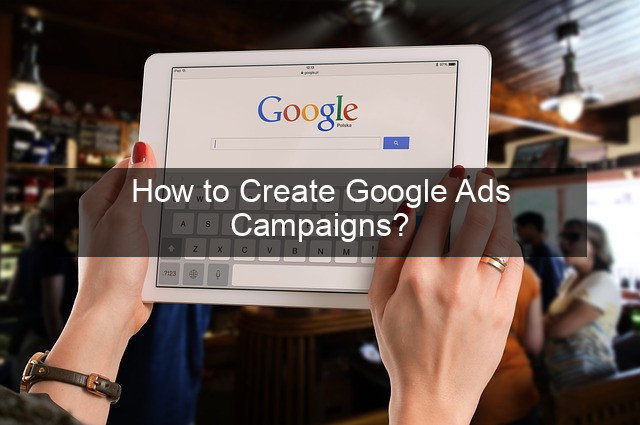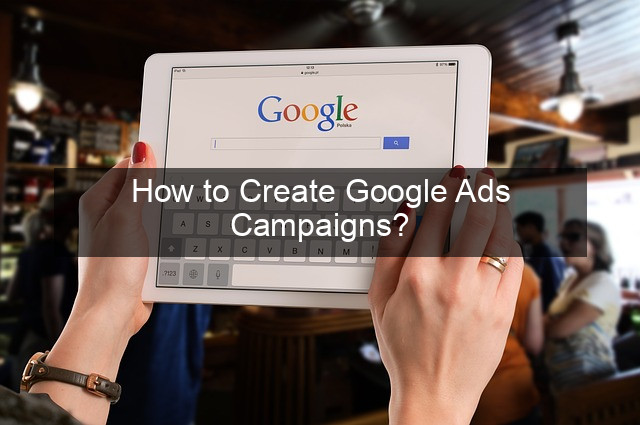How to Create Google Ads Campaigns?

- How to Create Google Ads Campaigns?
- Crafting Successful Google Ads Campaigns: A Comprehensive Guide
- Keyword Research and Targeting
- Identifying Relevant Keywords
- Targeting the Right Audience
- Refining Your Targeting Strategy
- Crafting Compelling Ad Copy
- Writing Effective Headlines
- Creating Engaging Ad Descriptions
- Campaign Optimization and Measurement
- Tracking Key Metrics
- A/B Testing and Refinement
- Conclusion
- Frequently Asked Questions (FAQ)

Crafting Successful Google Ads Campaigns: A Comprehensive Guide
In today’s digital landscape, a robust online presence is paramount for business success. Among the myriad of online advertising platforms, Google Ads stands out as a powerful tool for reaching potential customers. However, navigating the complexities of Google Ads can be daunting for newcomers. This comprehensive guide will equip you with the knowledge and strategies to create effective Google Ads campaigns that drive tangible results. From keyword research to ad copy creation and campaign optimization, we’ll delve into the essential steps to maximize your return on investment and achieve your marketing objectives. Whether you’re a seasoned marketer or just starting, this guide will provide valuable insights to help you harness the full potential of Google Ads.
Keyword Research and Targeting
Identifying Relevant Keywords
The foundation of any successful Google Ads campaign lies in thorough keyword research. Identifying the terms your target audience uses to search for products or services similar to yours is crucial. By understanding their search behavior, you can tailor your ads to appear when they’re actively looking for what you offer. This involves brainstorming relevant terms, analyzing competitor strategies, and leveraging keyword research tools. This process ensures your ads are seen by the right people at the right time.
Effective keyword research involves more than just identifying popular terms. It requires understanding search intent – what are users hoping to achieve when they type a specific query? Are they looking for information, ready to purchase, or simply browsing? By aligning your keywords with user intent, you can significantly improve the relevance and effectiveness of your ads.
Consider long-tail keywords, which are longer, more specific phrases. These often have lower competition and higher conversion rates, as they target users further down the sales funnel. For example, instead of targeting “shoes,” you might target “women’s running shoes for marathon training.” This level of specificity attracts highly qualified leads.
Targeting the Right Audience
Once you’ve identified your keywords, the next step is to define your target audience. Who are you trying to reach? Consider demographics like age, location, gender, and interests. Google Ads allows for precise targeting, ensuring your ads are shown to the most relevant users. This maximizes your budget and improves your chances of conversions.
Targeting options extend beyond basic demographics. You can target users based on their online behavior, interests, and even specific websites they visit. This granular level of control allows you to tailor your message to specific segments of your audience, increasing engagement and conversion rates.
Utilizing negative keywords is equally important. These are terms you want to exclude from your targeting. By identifying irrelevant keywords, you can prevent your ads from showing to users who are unlikely to convert, saving you money and improving your campaign performance.
Refining Your Targeting Strategy
Targeting is an ongoing process. Continuously analyze your campaign performance and adjust your targeting based on the data. Which keywords are driving the most conversions? Which demographics are responding best to your ads? By regularly refining your targeting strategy, you can optimize your campaigns for maximum impact.
Experiment with different targeting options and analyze the results. A/B testing different demographics, interests, and keywords can provide valuable insights into what resonates with your audience. This iterative approach allows you to fine-tune your targeting and achieve optimal results.
Leverage Google Analytics to gain a deeper understanding of your website traffic and user behavior. By integrating Google Ads with Analytics, you can track conversions, analyze user journeys, and identify areas for improvement in your targeting strategy.
Crafting Compelling Ad Copy
Writing Effective Headlines
Your ad headline is the first thing potential customers see. It needs to be attention-grabbing and clearly communicate the value proposition of your product or service. Use strong action verbs and highlight the key benefits to entice users to click.
Keep your headlines concise and relevant to the user’s search query. Ensure they accurately reflect the content of your landing page to avoid misleading users and improve your quality score.
Test different headline variations to see which performs best. A/B testing allows you to identify the most effective messaging and optimize your click-through rates.
Creating Engaging Ad Descriptions
The ad description provides more space to elaborate on your offering. Use this space to highlight key features, benefits, and calls to action. Persuade users that your product or service is the solution to their needs.
Incorporate relevant keywords in your description to improve relevance and quality score. However, avoid keyword stuffing, as this can negatively impact your ad performance.
Focus on clarity and conciseness. Users should quickly understand what you’re offering and how it benefits them.
Campaign Optimization and Measurement
Tracking Key Metrics
Monitoring campaign performance is essential for continuous improvement. Track key metrics like click-through rate (CTR), conversion rate, and cost per conversion to gauge the effectiveness of your campaigns. Use this data to identify areas for optimization and maximize your return on investment.
Regularly analyze your campaign data to identify trends and patterns. Which keywords are performing well? Which ads are driving the most conversions? Use these insights to refine your strategy and improve your results.
Utilize Google Ads reporting tools to gain a comprehensive overview of your campaign performance. These tools provide valuable data on impressions, clicks, conversions, and other key metrics.
A/B Testing and Refinement
Continuous testing and refinement are crucial for optimizing your campaigns. Experiment with different ad variations, keywords, and targeting options to identify what works best for your business. A/B testing allows you to make data-driven decisions and improve your campaign performance over time.
Don’t be afraid to try new things. The digital advertising landscape is constantly evolving, so it’s important to stay up-to-date with the latest trends and best practices. Experimentation is key to discovering new strategies and maximizing your results.
Analyze the results of your A/B tests and make adjustments accordingly. If one variation performs significantly better than another, implement the winning variation and continue testing new ideas.
| Metric | Description |
|---|---|
| CTR | Click-through rate |
| Conversion Rate | Percentage of clicks that result in a conversion |
- Monitor your campaigns regularly.
- Test different ad variations.
- Refine your targeting strategy.
Conclusion
Creating effective Google Ads campaigns requires a strategic approach, meticulous planning, and ongoing optimization. By understanding the fundamentals of keyword research, targeting, ad copy creation, and campaign measurement, you can harness the power of Google Ads to reach your target audience, drive conversions, and achieve your business objectives. Remember that continuous learning and adaptation are key to staying ahead in the ever-evolving world of digital advertising.
Frequently Asked Questions (FAQ)
What is the best way to start with Google Ads?
Begin with thorough keyword research and define your target audience. Then, create compelling ad copy and closely monitor your campaign performance.
How much does Google Ads cost?
The cost of Google Ads varies depending on factors like your industry, competition, and bidding strategy.
How can I improve my Google Ads campaign performance?
Continuously monitor your campaign metrics, A/B test different variations, and refine your targeting strategy based on the data.
What are negative keywords, and why are they important?
Negative keywords are terms you want to exclude from your targeting. They prevent your ads from showing to irrelevant users, saving you money and improving your campaign’s effectiveness.

How can I track my Google Ads conversions?
Set up conversion tracking in your Google Ads account to monitor which actions users take after clicking on your ads, such as purchases or form submissions.
What is the difference between broad match and exact match keywords?
Broad match keywords allow your ads to show for a wider range of searches, while exact match keywords restrict your ads to only show for specific search terms.


